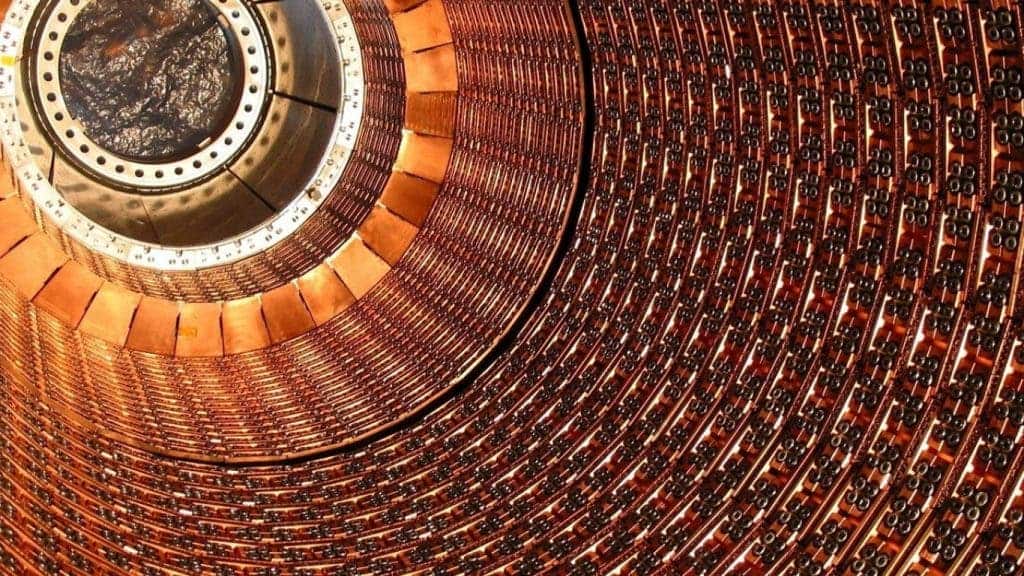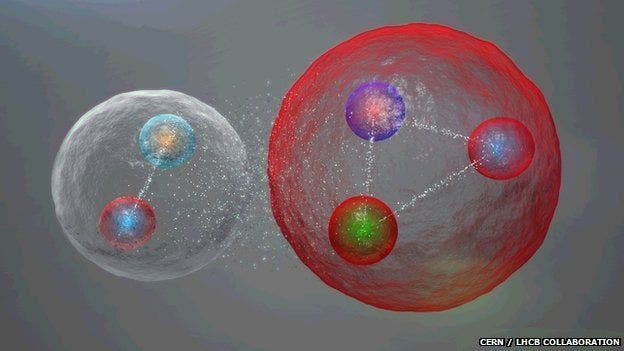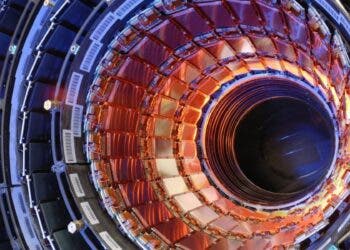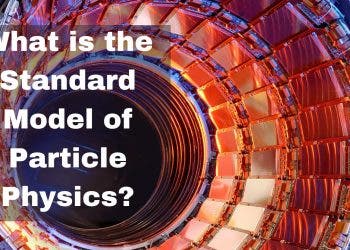After taking a short break in activity to be upgraded, the biggest atom smasher currently in use, CERN’s Large Hadron Collider came back in business, and it did so with a bang. Using it, researchers have discovered yet another new kind of particle dubbed “pentaquarks” -that amounts to a new form of matter.

The European Organisation for Nuclear Research, or CERN, said the discovery was made by a team working on one of the four experiments at the Large Hadron Collider (LHC) beneath the Swiss-French border.
The existance of quark-type particles was independently predicted by American physicists Murray Gell-Mann and Georg Zweig in 1960. They theorised that key properties of the particles known as baryons and mesons were best explained if they were in turn made up of other, smaller particles. Zweig coined the term “aces” for the three new hypothesised building blocks, but it was Gell-Mann’s name “quark” that stuck.
Their model also allows for other particles such as the pentaquark, made up of four quarks and an anti-quark (they’re just like matter and anti-matter). Mr Gell-Mann was awarded the Nobel Prize for physics in 1969.

Image via: bbc.com
“There is quite a history with pentaquarks, which is also why we were very careful in putting this paper forward,” Patrick Koppenburg, physics co-ordinator for LHCb at Cern, told BBC News.
During the mid-2000s, several teams claimed to have detected pentaquarks, but their discoveries were subsequently undermined by other experiments.
“It’s just the word ‘pentaquark’ which seems to be cursed somehow because there have been many discoveries that were then superseded by new results that showed that previous ones were actually fluctuations and not real signals.”
Previous experiments had measured only the so-called mass distribution where a statistical peak may appear against the background “noise” – the possible signature of a novel particle. But the collider enabled researchers to look at the data from additional perspectives, namely the four angles defined by the different directions of travel taken by particles within LHCb.
“We are transforming this problem from a one-dimensional to a five dimensional one… we are able to describe everything that happens in the decay,” said Dr Koppenburg who first saw a signal begin to emerge in 2012.
“There is no way that what we see could be due to something else other than the addition of a new particle that was not observed before.”
Guy Wilkinson, a spokesman for the LHC team, said studying pentaquarks may help scientists gain a better understanding of “how ordinary matter, the protons and neutrons from which we’re all made, is constituted”.
The findings were submitted to the journal Physical Review Letters.






